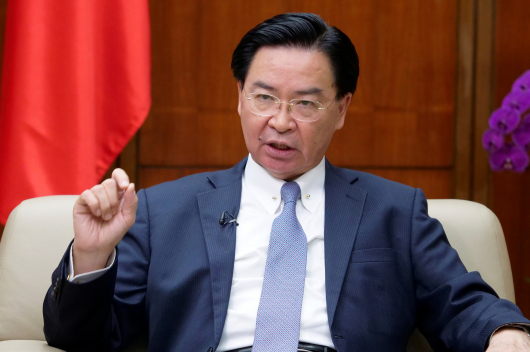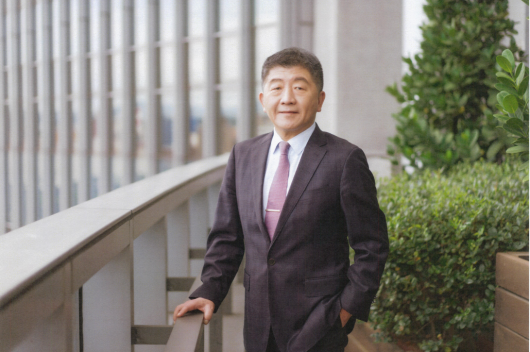President of the Republic of China (Taiwan), Tsai Ing-wen, recently convened a national security meeting with presence of the vice president, premier, secretary-general of national security council and heads of several ministries and the military to adopt a clear policy and mechanisms for responding to what the Beijing authorities refer to as the “one country, two systems model for Taiwan.”
Challenges posed by current developments across the Taiwan Strait
An address to mark the 40th anniversary of the so-called “Message to Compatriots in Taiwan” by China’s President Xi Jinping early this year (January 2) has clearly laid out a “one country, two systems model for Taiwan” as a roadmap to eventual unification. It was followed that President Xi’s remarks were identified as the core component of handling current and future Taiwan affairs in the annual meetings of PRC’s national legislature and the top political advisory body held early this month. And, on March 10, President Xi spoke of “benefitting Taiwan and its people” as the best approach to pave the way for implementation of the “one country, two systems model for Taiwan.”
In response, President Tsai noted these moves clearly show Beijing authorities’ incorporation of unification with Taiwan into their political agenda. As a result, cross-strait relations have now entered into a grim and complex phase. She restated Taiwan government’s current policy on cross-strait affairs calls for maintenance of the status quo the Republic of China’s independent sovereignty, and emphasized the “one country, two systems” principle unilaterally undermines the status quo, eliminates the sovereignty of the ROC (Taiwan), and forces Taiwan to accept unification with China. “For many years now, countless public opinion polls have shown that the vast majority of Taiwanese will not accept this,” Tsai said.
President Tsai also pointed out several threats against Taiwan posed by China. Militarily, Beijing has engaged in continual provocations by dispatching warships and military aircraft to encircle Taiwan. In foreign relations, it continually sought to lure away Taiwan’s diplomatic allies, diminish Taiwan’s status, and prevent Taiwan from taking part in international organizations. Economically, it has intended to siphon off Taiwan’s capital, talent and high-tech secrets. She also accused China of generating floods of disinformation in a bid to undermine the fair and open nature of Taiwan’s democracy from within, with obvious intentions of using politically-driven purchasing operations to dangle monetary inducements before local governments.
Reiterating Taiwan’s position
President Tsai reiterated Taiwan’s position by saying: “I want to emphasize once again that the government I lead is committed to maintaining cross-strait peace and stability, and supports normal cross-strait exchanges. However, we resolutely oppose ‘one country, two systems’ and refuse any transitional arrangement that would lead to forced unification.” “Our future is ours to decide. This is our bottom line,” she followed, “a bottom line that all political parties and politicians in Taiwan must respect.”
Noting that this year marks the 100th anniversary of the May Fourth Movement and the 30th anniversary of the Tiananmen Square Incident on June 4, 1989, President Tsai thought that “democracy” will be the keyword for both sides of the Taiwan Strait this year. She urged the Beijing authorities that “the key to cross-strait peace lies in whether China can institute democracy. Only if both sides of the Taiwan Strait adopt democratic systems can we communicate as equals, coexist peacefully, resolve our differences, and revive our relationship.”
President Tsai also reminded Beijing that any talk of “benefitting Taiwan and its people” should be rooted in genuine friendship, not just a ploy to promote “one country, two systems.” “If China truly wants to ‘benefit Taiwan,’ they should face up to the existence of the ROC (Taiwan), and set out on the path to democracy and rule of law,” she said.
International repercussions
China has been fortifying efforts in recent years to make its “one China principle” an international norm. It has pressured transnational enterprises to downgrade their designation for Taiwan and insisted that Taiwan must go through Beijing to participate in international activities in compliance with its “one China principle.” Both its “one China principle” and “one country, two systems model for Taiwan” are intended to influence other nations’ Taiwan policies. Many countries have their own “one China policy” and Taiwan policy, which differ from China’s version.
China’s push for a “one country, two systems model for Taiwan” is a typical example of its use of sharp power. Other democracies have encountered similar challenges in recent years and have adopted counterstrategies accordingly. For example, the Five Eyes countries—Australia, Canada, New Zealand, the United Kingdom, and the United States—have launched a boycott against the 5G products made by Huawei Technologies Co., Ltd. The European Commission issued the joint communication “EU-China—A strategic outlook” to review and adjust its China policy. In the meantime, the US has protested to China regarding its forcing foreign businesses operating in China to transfer technologies as well as its disregard for intellectual property rights. These developments demonstrate that China’s sharp power has become a common concern among democracies worldwide.
 3,575.44
3,575.44












Related News